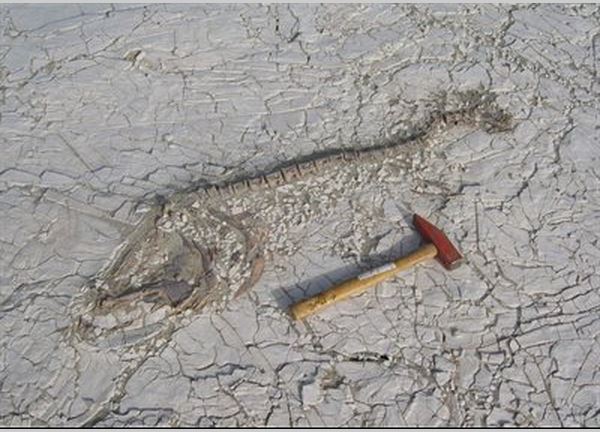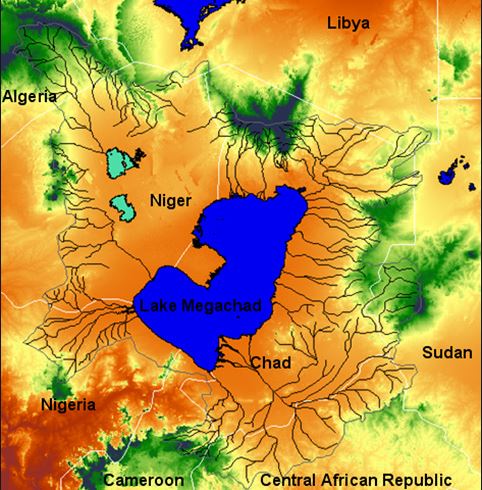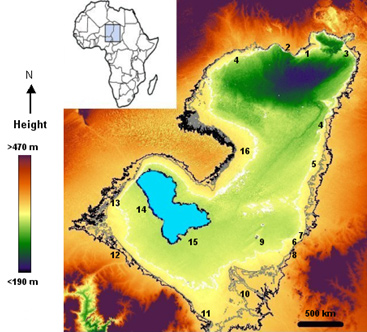| Online: | |
| Visits: | |
| Stories: |

| Story Views | |
| Now: | |
| Last Hour: | |
| Last 24 Hours: | |
| Total: | |
Palaeolake Mega-Chad: Largest Lake in the World Disappeared, Once Covered 360,000 Square Kilometers in Sahara 6,000 Year Ago
At its peak around 6,000 years ago, Palaeolake Mega-Chad was the largest freshwater lake on Earth, with an area of 360,000 km2. Now today’s Lake Chad is reduced to a fraction of that size, at only 355 km2. The drying of Lake Mega-Chad reveals a story of dramatic climate change in the southern Sahara, with a rapid change from a giant lake to desert dunes and dust, due to changes in rainfall from the West African Monsoon.
Part of the Palaeolake Mega-Chad basin that has dried completely is the Bodélé depression, which lies in remote northern Chad. The Bodélé depression is the World’s single greatest source of atmospheric dust, with dust being blown across the Atlantic to South America, where it is believed to be helping to maintain the fertility of tropical rainforests. However, the University of London team’s research shows that a small lake persisted in the Bodélé depression until about 1,000 years ago. This lake covered the parts of the Bodélé depression which currently produce most dust, limiting the dust potential until recent times.
The rivers, lake area and catchment area of Lake Megachad overlaid on the DEM of the Chad basin. Lakes are marked in blue, rivers in black and marshlands in green. When rivers flow into sand seas they often disappear in the dunes fields, and thus appear to terminate abruptly. This is probably because the channels are obscured by moving sand. Intermittent channel reaches can often be detected amongst the dunes in both the DEM and Landsat TM imagery suggesting they were once much more extensive
Source: http://www.ineffableisland.com/2015/07/palaeolake-mega-chad-largest-lake-in.html








Every continent has evidence of large “inland seas” which were left over from the Great Flood about 4300 years ago. This is also when the first historical records appear in every culture – most of which have pagan legends that corroborate the Bible’s account of the Flood. The world’s oceans are remnants of the Flood as well. The Bible is real including the gospel of God’s only Son, Jesus Christ, who gave His life on the cross as full payment for our sins, was buried three days and then resurrected. 2 Peter 3:3-6 “Knowing this first, that there shall come in the last days scoffers, walking after their own lusts, And saying, Where is the promise of his coming? for since the fathers fell asleep, all things continue as they were from the beginning of the creation. For this they willingly are ignorant of, that by the word of God the heavens were of old, and the earth standing out of the water and in the water: Whereby the world that then was, being overflowed with water, perished:”